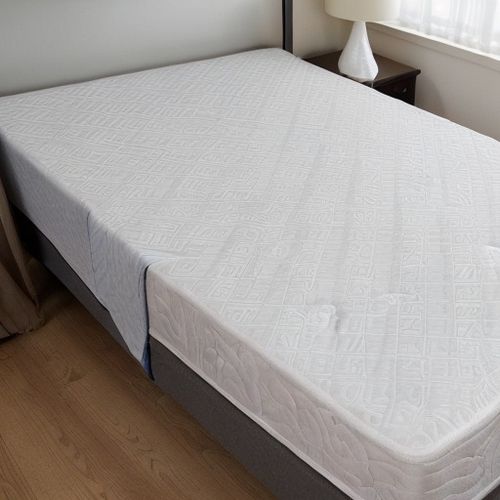For those who spend long hours sitting at a desk or in front of a computer, the toll on the body can be significant. Neck pain, stiff shoulders, and lower back discomfort are common complaints among the sedentary population. The good news is that incorporating simple stretches into your daily routine can help alleviate these issues and prevent long-term damage. Stretching not only improves flexibility but also enhances blood circulation, reduces muscle tension, and promotes better posture.
The Importance of Stretching for Sedentary Lifestyles
Modern work environments often require prolonged periods of sitting, which can lead to muscle imbalances and chronic pain. The human body is designed for movement, and when we remain static for too long, certain muscles become overworked while others weaken. The neck and lower back are particularly vulnerable, as they bear much of the strain from poor posture and inactivity. Regular stretching helps counteract these effects by keeping muscles supple and joints mobile.
One of the most overlooked aspects of desk-bound work is the strain it places on the cervical spine. Constantly looking down at screens or hunching over keyboards tightens the muscles at the front of the neck and chest while weakening those at the back. This imbalance often results in what’s commonly known as "tech neck," a condition characterized by stiffness and discomfort. Similarly, prolonged sitting compresses the lumbar spine, leading to tight hip flexors and weakened glutes—a recipe for chronic lower back pain.
Effective Stretches for Neck Relief
A simple yet powerful stretch for the neck involves gently tilting the head to one side, bringing the ear toward the shoulder. Hold this position for 15-20 seconds, feeling the stretch along the side of the neck. Avoid lifting the shoulder toward the ear, as this can reduce the effectiveness of the stretch. Another beneficial movement is the chin tuck, which helps realign the cervical spine. Sit tall, then slowly draw the chin backward as if creating a double chin. Hold for a few seconds and release. Repeating this several times throughout the day can significantly reduce forward head posture.
For those experiencing tension between the shoulder blades, the seated angel stretch can provide relief. Place your hands behind your head with elbows wide. Gently squeeze your shoulder blades together while opening your chest. This not only stretches the upper back but also counteracts the hunched posture common in desk workers. Remember to breathe deeply during these stretches, as proper oxygenation helps relax tense muscles.
Addressing Lower Back Discomfort
The lower back often bears the brunt of prolonged sitting, but targeted stretches can offer substantial relief. The seated forward fold is particularly effective. While sitting on the edge of your chair with feet flat on the floor, hinge at the hips and lower your torso toward your thighs. Allow your arms to hang loosely or reach for your feet. This stretch lengthens the hamstrings and releases tension in the lumbar region. For those with tight hips—a common issue among sitters—the seated figure-four stretch works wonders. Cross one ankle over the opposite knee, then gently lean forward while keeping the spine straight.
Another valuable stretch for the lower back is the cat-cow movement, which can be done right at your desk. Place your hands on your knees and alternate between arching your back upward (cat) and dipping it downward (cow). This dynamic stretch mobilizes the entire spine and helps maintain its natural curvature. Incorporating these movements into short breaks throughout the workday can prevent stiffness from setting in.
Creating a Sustainable Stretching Routine
While knowing specific stretches is helpful, consistency is key to seeing real benefits. Set reminders to take brief stretching breaks every hour, even if just for a minute or two. Pairing stretches with other healthy habits, such as staying hydrated and adjusting workstation ergonomics, enhances their effectiveness. Over time, these small but regular interventions can transform how your body feels after long hours of sitting.
It’s worth noting that stretching should never cause pain. Discomfort is normal when lengthening tight muscles, but sharp or intense pain signals that you’ve gone too far. Listen to your body and modify stretches as needed. For those with existing neck or back conditions, consulting a physical therapist before beginning a new stretching regimen is advisable. With patience and persistence, even the most dedicated desk workers can maintain flexibility and comfort despite their sedentary routines.

By Thomas Roberts/Apr 25, 2025

By Daniel Scott/Apr 25, 2025

By Thomas Roberts/Apr 25, 2025

By Daniel Scott/Apr 25, 2025

By Lily Simpson/Apr 25, 2025

By Megan Clark/Apr 25, 2025

By Christopher Harris/Apr 25, 2025

By Amanda Phillips/Apr 25, 2025

By John Smith/Apr 25, 2025

By Michael Brown/Apr 25, 2025

By Daniel Scott/Apr 25, 2025

By Olivia Reed/Apr 25, 2025

By Elizabeth Taylor/Apr 25, 2025

By James Moore/Apr 25, 2025

By John Smith/Apr 25, 2025

By William Miller/Apr 25, 2025

By Daniel Scott/Apr 25, 2025

By Emma Thompson/Apr 25, 2025

By James Moore/Apr 25, 2025

By Ryan Martin/Apr 25, 2025